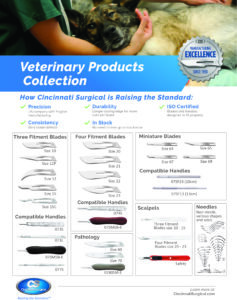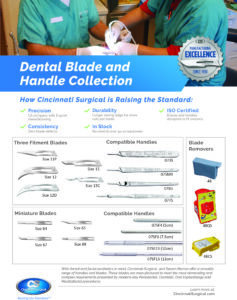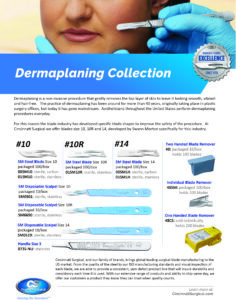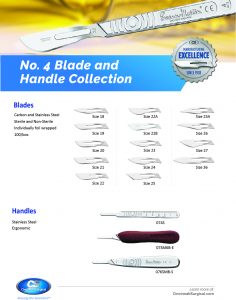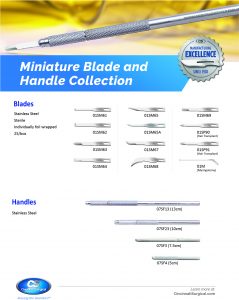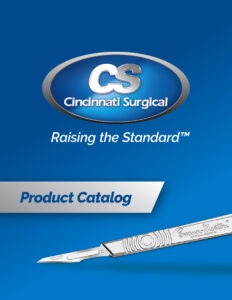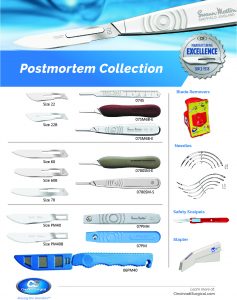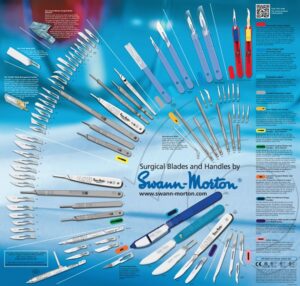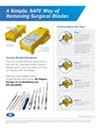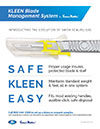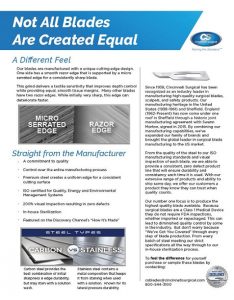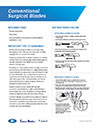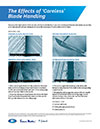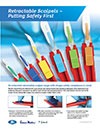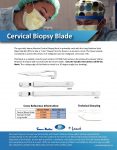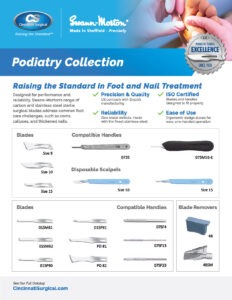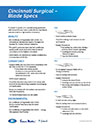Reference Documents
Frequently Asked Questions
Are surgical blades and scalpels made from Carbon or Stainless Steel?
The hardness of the blade is determined by the heat treatment process and it involves striking a balance between hardness and flexibility. A marginally softer stainless blade tends to be more flexible than a carbon blade.
The stainless blade, however, has better anti-corrosion properties which makes it a more suitable blade for a disposable scalpel or for procedures that use copious amounts of saline solution which would cause an immediate rusting action when contacting the surface of a carbon blade.
Carbon steel, because of its properties, offers what we believe is the best combination of initial sharpness and durability. This opinion seems to be shared by many end users and is reflected in the volume of Carbon blades consumed annually each year compared to our Stainless blades.
How are surgical blades made?
The program provides some insight into the process itself, the amount of quality control that each and every blade is subjected to and our guarantee of consistency and reliability.
How sharp are surgical blades and scalpels?
There is also a balance between initial sharpness and durability. Do you want the blade to make a single incision or to last for numerous cuts during a major surgical case that can last for hours? Then you have to factor in different cutting edge technologies, coatings, grinding angles etc. all of which will impact on performance under specific usage conditions.
There can be benefits and disadvantages to all these facets depending on the area of surgery and procedure being performed.
With Swann Morton as our manufacturing partner we aim to provide a consistent, reliable cutting edge across various shapes and product ranges which will deliver the best combination of initial keenness and durability to a vast array of end users.
What handle goes with your stitch cutter blades?
What is the Cygnetic range?
The blades can literally be dropped into the handle and are locked into place using the simple lever mechanism.
For blade changes during or at the end of the procedure the lever is opened allowing the blade to drop into a blade counter or waste box so no-one has to handle the contaminated sharp. The handle itself can be simply dismantled for cleaning and then reassembled ready for the next patient.
What is the most popular blade shape?
Why are there so many different handle options?
The No.3 fitment handles including the 3, 3L, 5B, 7, 9 and B3 fit the small size shapes from 6 to 16 and also includes 40.
The No.4 fitment handles including the 4, 4L and 6 fit the large blade shapes from 18 to 36.
The most commonly used handles are the standard 3 (073S) and 4 (074S). The 3L (073L) and 4L (074L) provide extra length and reach for deep surgery. Additionally, there are small thin handles like the 7 (077S) and 9 (07SM9S), bulbous handles such as the 5 (07SM5B-S) and 6 (07SM6B-S) and more ergonomically designed handles such as the B3 (07B3).
Which handle is actually used is determined by the surgeons own preference in relation to the procedure being performed.
Why are there so many shapes of surgical blades and scalpels?
As surgical techniques have become more refined and more intricate the demand for slight variations in shape have been the catalyst leading to an ever expanding offering.
Today there are 32 different blade shapes in the standard blade range and this is before considering the more specialized ranges such as Fine and Cygnetic.
Why is there a graduated measure on some of the handles?
Why is there a range of surgical blades attached to a plastic handle?
The disposable scalpels, as they have become known, were historically used in less controlled environments outside of the Operating Room itself so it was considered more convenient and probably safer to have the blade already attached to the handle.
They are also used in emergency departments and in trauma situations out in the field where time is of the essence and to start trying to fit the blade to a handle at the scene of a major incident is both time consuming and not practical.
The whole scalpel is disposed of after use.

